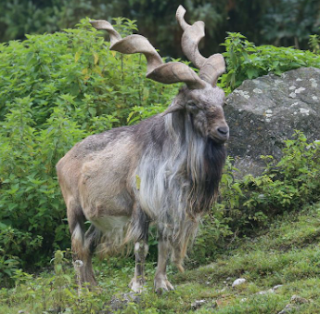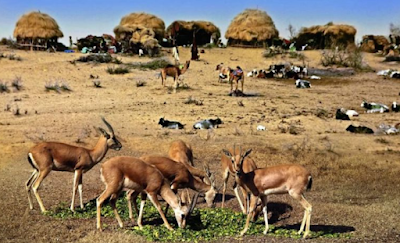Protected areas
Protected areas are defined as regions of land and/or sea that are
managed with the primary objective of conserving biodiversity, along with
associated cultural, spiritual, and recreational values. Protected areas can
include national parks, wildlife sanctuaries, nature reserves, game reserves,
and other areas that have been set aside by governments, private organizations,
or communities.
The primary aim of protected areas is to safeguard and conserve
ecosystems, species, and genetic diversity by maintaining ecological processes
and reducing human impacts on the natural environment. Protected areas can
provide a range of benefits, including the protection of watersheds, regulation
of climate, carbon sequestration, and maintenance of ecological services that
benefit human populations.
Protected areas can be managed through a variety of conservation
strategies, including zoning, surveillance, research and monitoring, and
participatory management. Additionally, many protected areas have provisions
for sustainable use of natural resources, such as ecotourism, research, and
traditional resource use by local communities.
Protected areas are considered an important tool for achieving
global biodiversity conservation goals and are recognized as a key element of
international agreements such as the Convention on Biological Diversity and the
United Nations Sustainable Development Goals.Importance of Protected Areas:
Conservation of biodiversity:
Protected areas play a crucial role in preserving the Earth's biodiversity by
providing safe habitats for a wide range of plant and animal species. These
areas can support a high level of species diversity and provide essential
ecological services such as pollination, water purification, and soil
formation.
Preservation of ecosystem services: Protected areas help to maintain the natural systems that provide
essential ecosystem services such as carbon sequestration, water regulation,
and climate regulation.
Sustainable use of natural resources: Protected areas can be managed to support the sustainable use of
natural resources such as timber, non-timber forest products, and fisheries,
while ensuring that these resources are not depleted.
Cultural and spiritual values:
Protected areas often have cultural and spiritual significance for local
communities, who have developed traditional knowledge and practices for
managing these areas sustainably.
Climate change
mitigation: Protected areas can help to
mitigate the effects of climate change by storing carbon and reducing
greenhouse gas emissions through sustainable land use practices.
Economic benefits: Protected
areas can generate income and employment opportunities through ecotourism,
research, and other sustainable uses of natural resources.
Overall, protected areas are essential for the long-term
conservation of biodiversity and the sustainable use of natural resources. They
are an important tool for achieving global biodiversity conservation goals and
ensuring that future generations can continue to benefit from the Earth's
natural resources.
Types
There are several types of protected areas, including:
National Parks: These areas
are designated for the conservation of wildlife and their habitats, as well as
for recreational and educational purposes.
Wildlife
Sanctuaries: These areas are designated for the
conservation and protection of wild animals, including birds, mammals, and
reptiles.
Game Reserves: These areas are designated for the conservation and protection of
game animals such as antelopes, deer, and zebras, as well as for hunting and
other recreational purposes.
Biosphere
Reserves: These areas are designated for the
conservation of biodiversity and the sustainable use of natural resources,
while also promoting research and education.
Nature
Reserves: These areas are designated for the
conservation of natural landscapes, including geological features, forests, and
wetlands.
Marine Protected Areas: These areas
are designated for the conservation of marine biodiversity, including coral
reefs, seagrass beds, and mangroves.
Wilderness
Areas: These areas are designated for the
preservation of natural landscapes and ecosystems, with minimal human impact.
Protected
Landscapes: These areas are designated for the
conservation of natural and cultural landscapes, including traditional
agricultural systems, and other human activities.
Community-Based Natural Resource Management Areas: These areas are managed by local communities for the conservation
of biodiversity and sustainable use of natural resources.
Each type of protected area has its own specific management goals,
objectives, and regulations, depending on the conservation priorities and the
specific ecosystems and species found in the area.
Despite the importance of protected areas for the conservation of
biodiversity and the sustainable use of natural resources, these areas face a
range of threats, including:
Illegal activities: Illegal activities such as poaching, logging, and mining can cause
significant damage to protected areas and can lead to the loss of key species
and habitats.
Habitat destruction: Habitat
destruction, such as deforestation and land conversion for agriculture and
infrastructure, can fragment habitats and reduce the area available for
wildlife.
Climate change: Climate change can impact protected areas by altering ecological
processes, reducing species distributions, and changing the timing of key life
events such as breeding and migration.
Invasive species: Invasive
species can outcompete native species, alter habitat conditions, and disrupt
ecosystem processes.
Pollution: Pollution from
agricultural, industrial, and urban sources can degrade water quality, soil
health, and air quality, negatively impacting the health of protected areas and
the species that live there.
Human-wildlife conflict: Conflicts
between humans and wildlife, such as crop raiding and predation, can lead to
negative attitudes towards wildlife and result in the persecution or removal of
key species.
Insufficient funding and resources: Protected areas often face limited funding and resources, which
can lead to inadequate management and enforcement of regulations, leaving areas
vulnerable to threats.
It is important to address these threats to protected areas through
effective management, research, and public education, in order to ensure the
long-term conservation of biodiversity and the sustainable use of natural
resources.
Here is a comprehensive list of the protected areas in Pakistan,
including national parks, wildlife sanctuaries, game reserves, and other
conservation areas:
- Ayubia National Park
- Central Karakoram National Park
- Chitral Gol National Park
- Deosai National Park
- Diamer-Basha Dam and Chilas Forest Reserve
- Hazarganji-Chiltan National Park
- Hingol National Park
- Jandol Game Reserve
- K2 National Park
- Kala Chitta Game Reserve
- Kalesar National Park
- Kandia Game Reserve
- Kirthar National Park
- Khunjerab National Park
- Kirthar Wildlife Sanctuary
- Lal Suhanra National Park
- Machiara National Park
- Margalla Hills National Park
- Murree-Kotli Sattian-Kahuta National Park
- Nawabganj Wildlife Sanctuary
- Naltar Wildlife Sanctuary
- Pir Lasura National Park
- Rann of Kutch Wildlife Sanctuary
- Sheikh Badin National Park
- Skardu-Khaplu Protected Area
- Soan Valley Wildlife Sanctuary
- Taunsa Barrage Dolphin Reserve
- Toli Pir Game Reserve
- Tochi Wildlife Sanctuary
- Ucchali Wildlife Sanctuary
- Ziarat Juniper Forest
Please note that this is not an exhaustive list, and there may be
other protected areas in Pakistan that are not included here.













